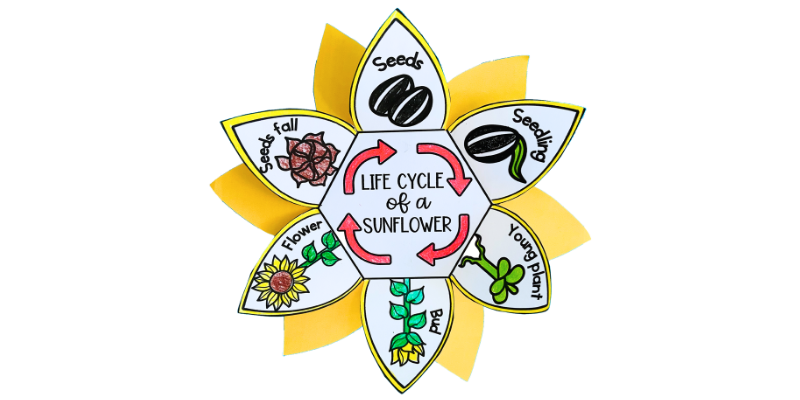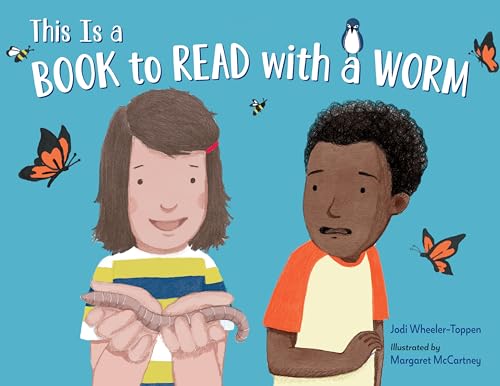Worms are a great minibeast to study in the classroom. They are easy to find, safe to handle, and can be fascinating to observe. Earthworms can be incorporated into students’ environmental studies, Earth Day science lessons, or as a way to learn about what lives on your school grounds.
In this blog post, discover ideas and earthworm activities for children to learn about these important animals and plan an exciting earthworm science lesson!
Why should children learn about earthworms?
The humble earthworm is one of the most important animals on our planet. They play a crucial role in maintaining soil health by aerating the soil, promoting nutrient cycling, and improving water infiltration and retention. Their activities enhance soil fertility and structure making them indispensable for agricultural productivity and environmental sustainability.
Earthworms are also an essential part of food webs in woodlands, gardens, meadows, and other habitats. Worms are an important source of food for many birds, mammals, reptiles, and amphibians.
Finding earthworms
To find earthworms, you’ll want to look somewhere that has loose, damp soil for children to easily dig. According to The Natural History Museum, one way to encourage worms to the surface is by using mustard water. You can find the steps involved on their website.
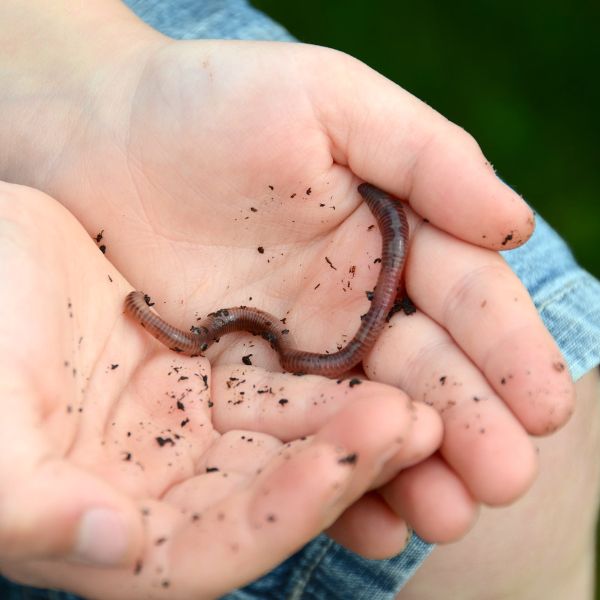
Observing earthworms in the classroom
It’s a simple activity but observing a live earthworm is a fun way to learn about its body parts and behaviour. When using live animals, start with a discussion about how to ensure the worms are kept safe and not injured during collection and observation.
To collect worms for observation, you could use the mustard water method above, or just dig gently in some damp soil. Worms do not need to be handled directly – they can be transferred from soil to a dish or tray using a spoon or small trowel.
When observing the worms, place them on a damp paper towel to keep them moist. Don’t forget to have hand lenses or even microscopes on hand.
The first thing for children to find out is which end is which. As they observe their worm, ask them to identify which is the head and which is the tail. How do they know? Other body parts to look for are the clitellum, or saddle (on adult worms) and the body segments.
Children could use a cotton bud/Q-tip to gently turn the worm over and observe what happens. Does it return to its original position? Students could also measure their worm (and compare results) or draw their worm with labelled body parts.
Worms should not be kept out of the soil for long periods. After observing, they should be carefully placed back in their habitat.
Need an ready-to-print earthworm observation worksheet for your lesson? You can download this one for free below.
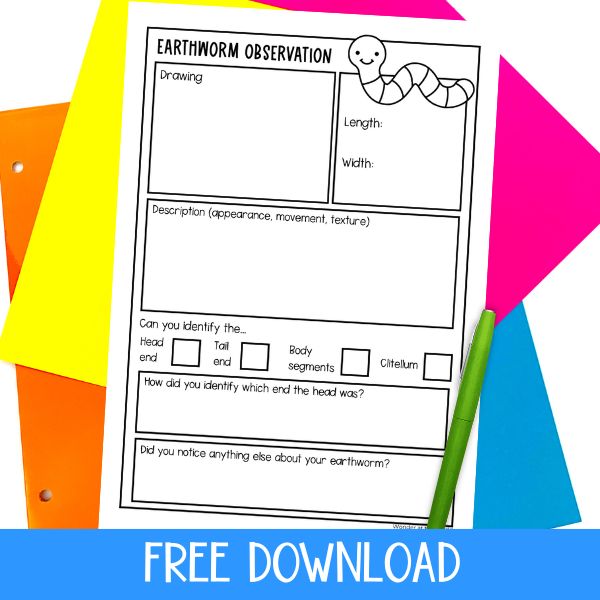
Earthworm investigations
Students could devise and complete some simple investigations with their earthworms. For example, they could look at habitat preference by giving different substrate choices to burrow in, or see how they react to light by introducing a torch. A very simple investigation could involve presenting worms with a choice of a damp or dry paper towel and recording movement over time.
Worm life cycle foldout activity
The life cycle of an earthworm begins with a cocoon filled with eggs. Young earthworms, called juveniles, hatch from the cocoon. The juveniles grow into adults (who can be identified by the presence of the clitellum or saddle towards the head end of the body).
To help children understand the stages of the earthworm life cycle, use this fun foldable activity. Children color the template, sequence the life cycle stages, cut, and fold. The finished foldouts can be placed in interactive science notebooks for future reference.
Once children are familiar with the earthworm life cycle, they could compare it to another bug (e.g. a butterfly) to note the differences.
The differentiated templates, alongside other earthworm printables can be purchased in my TeachersPayTeachers and Etsy stores – just use the links below.
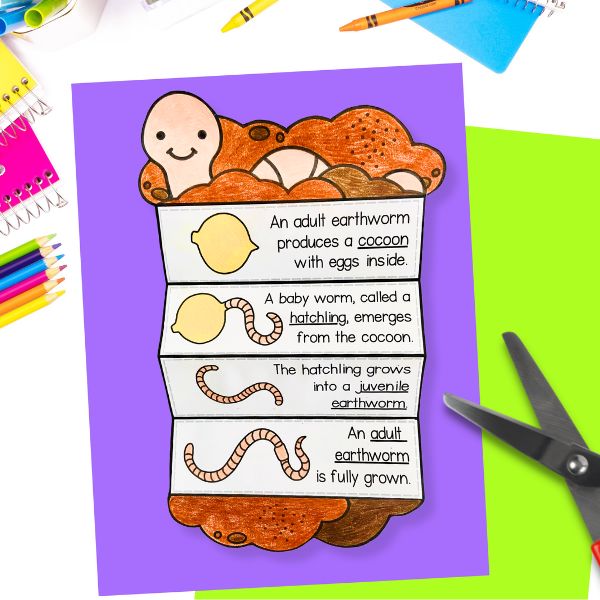
Make a wormery
Worms are pretty easy to care for and having a wormery means you can observe them over time. A wormery can be as simple as a plastic bottle filled with layers of damp sand and soil (cut the top off first). Add some leaves, then use some plastic wrap with small holes in to keep worms from getting out.
Students could take photos of the wormery each day and note any changes. Don’t forget to keep it damp, dark, and cool, and to release any worms once you’ve completed your observations.
Find out about Charles Darwin’s worm studies
Charles Darwin was best known for his work on natural selection but the last book he wrote was actually about earthworms!
Darwin spent many hours observing worms inside and outside his home and made some notable conclusions. For example, he saw the earthworms would drag leaves down to their burrows tip-first – the most efficient way. He also noticed they responded to strong light by moving into their burrows, but when stimulated with heat or sound, there was little effect.
One thing I found particularly interesting was that Darwin investigated earthworms’ favourite foods. They love raw carrot!
Students could research some of Darwin’s earthworm experiments and even try and re-create some themselves.
Earthworm science resources
Check out these earthworm science resources to support your students’ learning about our wriggling friends. This part of the post contains affiliate links. As an Amazon Affiliate, I earn from qualifying purchases at no extra cost to you.
- Made from durable material, PVC plastic , can be used over and over again.
- Children can see how animals change and grow. Realistic detail showing a different stage in the development of animals.
- French, Vivian (Author)
- English (Publication Language)
- 32 Pages – 02/28/2012 (Publication Date) – Candlewick (Publisher)
- Hardcover Book
- Wheeler-Toppen, Jodi (Author)
- English (Publication Language)
- 32 Pages – 03/19/2020 (Publication Date) – Charlesbridge (Publisher)
Join the Wonder at the World Community
